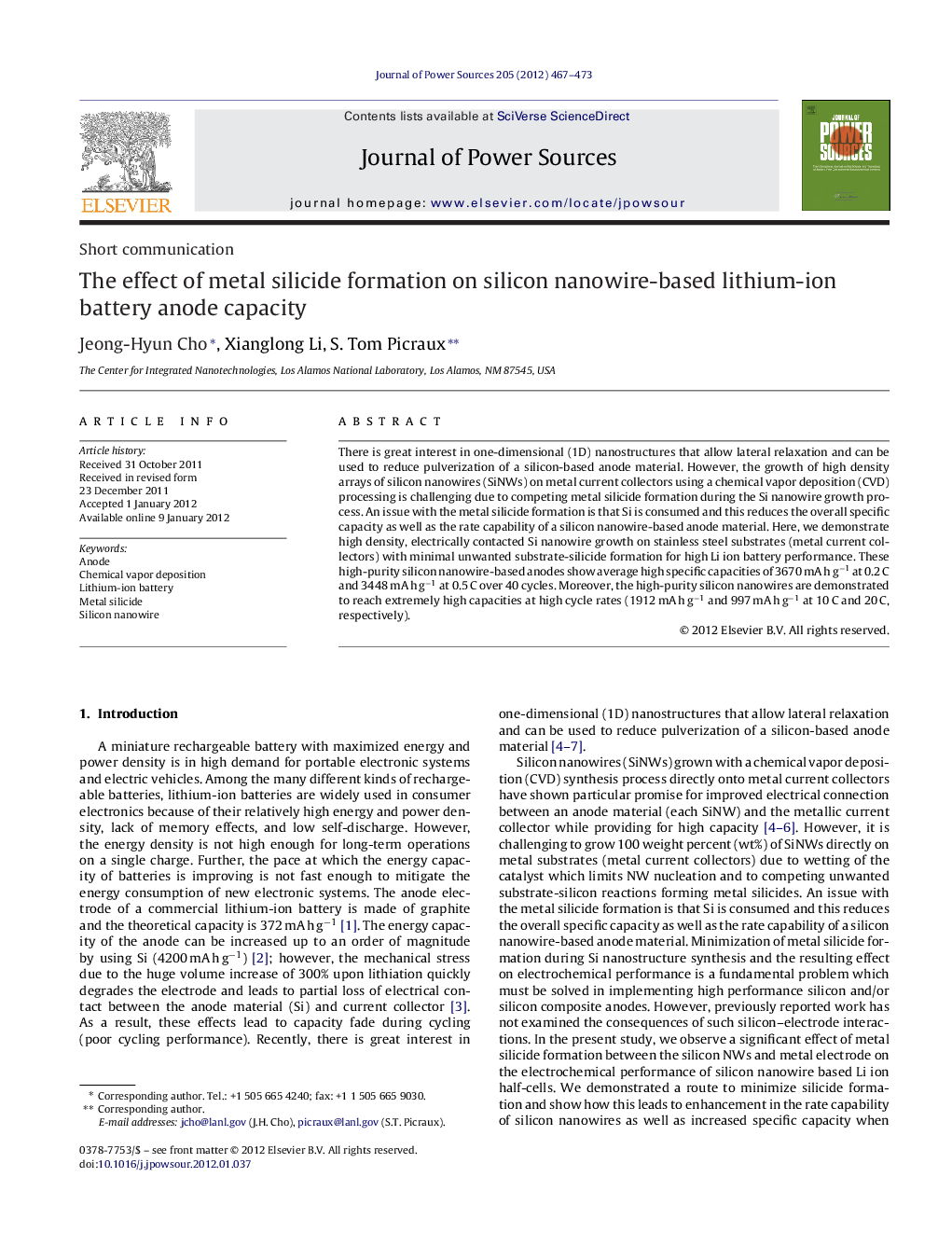| Article ID | Journal | Published Year | Pages | File Type |
|---|---|---|---|---|
| 1288169 | Journal of Power Sources | 2012 | 7 Pages |
There is great interest in one-dimensional (1D) nanostructures that allow lateral relaxation and can be used to reduce pulverization of a silicon-based anode material. However, the growth of high density arrays of silicon nanowires (SiNWs) on metal current collectors using a chemical vapor deposition (CVD) processing is challenging due to competing metal silicide formation during the Si nanowire growth process. An issue with the metal silicide formation is that Si is consumed and this reduces the overall specific capacity as well as the rate capability of a silicon nanowire-based anode material. Here, we demonstrate high density, electrically contacted Si nanowire growth on stainless steel substrates (metal current collectors) with minimal unwanted substrate-silicide formation for high Li ion battery performance. These high-purity silicon nanowire-based anodes show average high specific capacities of 3670 mA h g−1 at 0.2 C and 3448 mA h g−1 at 0.5 C over 40 cycles. Moreover, the high-purity silicon nanowires are demonstrated to reach extremely high capacities at high cycle rates (1912 mA h g−1 and 997 mA h g−1 at 10 C and 20 C, respectively).
Graphical abstractFigure optionsDownload full-size imageDownload as PowerPoint slideHighlights► Effect of metal silicide formation on silicon nanowire-based anode was investigated. ► A route to minimize silicide formation was demonstrated. ► High-purity silicon nanowires (SiNWs) were grown on stainless steel substrates. ► The high-purity SiNWs enhanced the overall specific capacities and rate capacities.
